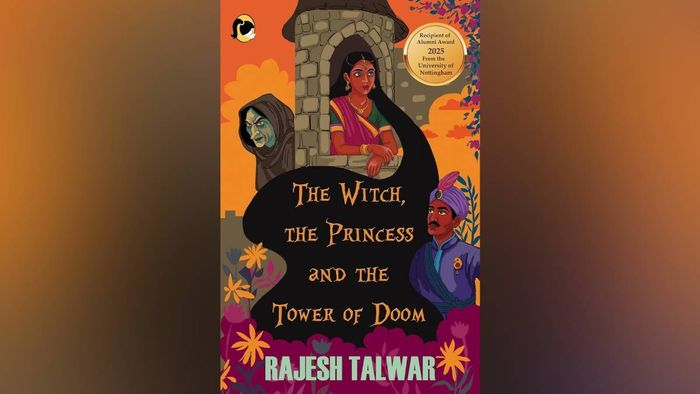Princess Pihu or Rapunzel? Revisit an Indianised and 'over-spiced' fairytale
Rajesh Talwar’s book offers a fresh Indianised take on Rapunzel with quirky characters and cultural flavours. It breaks traditional stereotypes while appealing mainly to children.

- Sep 05, 2025,
- Updated Sep 05, 2025, 7:16 PM IST
"...It was a dark and dingy room, more like a prison cell than a residence. With a few changes though, Pihu thought the room could look much brighter and better, but she kept quiet". Most princesses in fairytales wail, sigh, or faint dramatically when locked away in a tower. Princess Pihu (an Indian) on the other hand, responds like a home décor blogger stuck on a budget - mentally rearranging the furniture instead of panicking. That pretty much sets the tone for Rajesh Talwar’s 'The Witch, The Princess and the Tower of Doom'.
This book has everything you don’t expect in a fairytale. A trapped Indian princess from the Pandya kingdom who is not "very" scared, a witch who is more eccentric than evil, and a prince who is bald, forgetful, and anything but charming. Add to that a royal family obsessed with rava dosas, chutneys, khichri, special herbal teas and you’ve got a Rapunzel retelling that feels less like Disney and more like dinner-table comedy.
We all grew up with Rapunzel. That fairytale of the Disney princess with impossibly long hair, locked away in a tower, waiting for her prince to rescue her from the clutches of an evil witch. For generations, children have imagined Rapunzel letting down her hair, the prince climbing up, and the story ending with freedom, romance, and happily-ever-after.
But Rajesh Talwar’s 'The Witch, The Princess and the Tower of Doom' does something delightfully different - it takes that familiar template and flips the script. Instead of another helpless princess pining for rescue, we meet Princess Pihu, an Indian child of hope and prayer, who just happens to have the same long, flowing hair. From the very first page, the author makes it clear: Pihu is Rapunzel, and yet, not quite.
The refreshing twist makes the book stand apart. Even the witch, Churailamma, is not entirely evil. She’s a quirky, desi figure - stern, yes, but at times surprisingly likeable.
While children will enjoy the whimsical details, adults are likely to find the narrative a little too kiddish and over the top. Sure, the book is unusual, playful, and distinctly Indian but why does it still feel that it is a little too much? The queen craving rava dosas, chutneys; another queen preparing khichri because the king likes it. While everything is completely natural, imagining a royal kingdom that way seems a bit too eccentric.
The book is a short read, easy to finish in one sitting, and full of exaggerations that can draw giggles from young readers. But the very things that make it quirky also make it uneven. The exaggerations, while fun for children, sometimes cross into the absurd.
The story doesn’t always hold together with the smoothness of a classic fairytale, and in trying so hard to “Indianise” Rapunzel, it occasionally feels forced. And there lies the real challenge. Rapunzel is a beloved story the world over. Introducing a new “princess contender” like Pihu inevitably invites comparisons, and for older readers already attached to the classic, this retelling may fall short.
Still, as a children’s book, 'The Witch, The Princess and the Tower of Doom' succeeds in breaking stereotypes. It gives kids a princess who makes the best of her circumstances, a witch who isn’t entirely bad, and a prince who isn’t defined by perfection.
It may not satisfy adult readers looking for depth or polish, but for young ones, it delivers exactly what it promises. An easy, fun, and desi twist on a timeless fairytale.